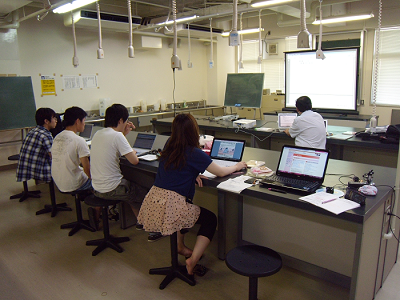Team:KIT-Kyoto/Safety
From 2011.igem.org
 |

|
| Home | Team | Project | Parts | Notebook | Safety | Human Practice | Attributions |
|---|
| Home > Safety | Language:English/Japanese |
|---|
Questions
There are 4 questions on the safety page.
Answers
Q. Would any of your project ideas raise safety issues in terms of:
- 1.researcher safety,
- 2.public safety, or
- 3.environmental safety?
A. No issues of researcher safety, public safety or environmental safety raised up during our KIT-Kyoto iGEM 2011 project. All our work was performed fallowing the guidelines of the safety standards required by biosafety level 1. Rules of best microbiological practices were applied. In our project we are producing recombinant E. coli and transgenic flies under direction of guidelines established by KIT recombinant experiment committee. They will be produced and kept in P1 room and fly room in which fly trap and double-entry doors are equipped.
double-entry doors
| fly trap
|
|---|
Q. Do any of the new BioBrick parts (or devices) that you made this year raise any safety issues? If yes,
- 1.did you document these issues in the Registry?
- 2.How did you manage to handle the safety issue?
- 3.How could other teams learn from your experience?
A. No.A new Bio Brick part we are making in our project is a Drosophila model for lymphatic leukemia. This part is no toxic, no infectious and completely harmless.
Q. Is there a local biosafety group, committee, or review board at your institution?
- 1.If yes, what does your local biosafety group think about your project?
- 2.If no, which specific biosafety rules or guidelines do you have to consider in your country?
A. Yes. We have bio safety group at KIT, and our project has been monitored by them. The leader of this biological safety group was Prof.Yamaguchi. Furthermore, there is an upper level committee of transgenic experiences at Kyoto Institute of Technology. Our project has also received accreditation from this committee. All material handled or distributed are non-hazardous and non-infectious. It agrees with all safety standards requested by biosafety level 1. Therefore, Prof. Yamaguchi and other education stuff and instructors fully support the work done by this iGEM team.
Q. Do you have any other ideas how to deal with safety issues that could be useful for future iGEM competitions? How could parts, devices and systems be made even safer through biosafety engineering?
A. We have 3 ideas.
- 1. To establish "Best Safety" Prize. This prize awards the team which shows best effort of biosafety-for example, showing or doing new approach of biosafty, and so on.
- 2. To add a new requirement to earn a Silver Medal; Join local biosafety group, committee, or review board at your institution. If there is not such group, make biosafty group and join.
- 3.To deal with emergency, we will make safety manuals for experiments.
Lecture class about experiments of genetically-engineering
We took Lecture class about experiments of genetically-engineering because we conduct experiments of genetically-engineering. We learned its history and registration, and challenge our project this year.
</div>
 "
"

